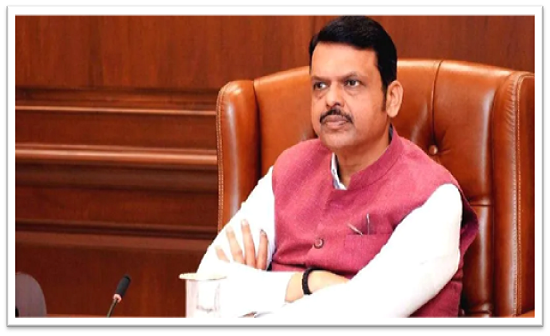
From Honks to Harmony: Mumbai Entrepreneur Launches 'Quiet India' to Transform Urban Health and Productivity
India’s urban soundscape is reaching unprecedented levels of intensity, with millions of vehicles, construction sites, and public events creating constant noise. Recognizing the multifaceted consequences of this trend, Mumbai-based social entrepreneur Savitha Rao, founder of India Positive Citizen, has launched Quiet India—the country’s first nationwide movement positioning noise as a public health and economic concern.
Quiet India reframes silence as a civic asset. Rao’s initiative emphasizes that a quieter environment is not a luxury but a foundation for health, productivity, and urban governance. The campaign arrives at a critical juncture: India’s cities are expanding rapidly, and unchecked noise is threatening both citizen well-being and long-term economic efficiency.
A National Framework for Acoustic Well-Being
What sets Quiet India apart is its holistic, systems-based approach. Unlike earlier initiatives limited to festivals or neighbourhoods, the movement seeks to unify scattered efforts under a single national agenda. It brings together policymakers, urban planners, health experts, law enforcement, and citizens to address noise not merely as a nuisance, but as a systemic challenge with social, economic, and health dimensions.
Rao articulates the philosophy succinctly: “Noise is the pollution we have normalised. Quiet India is about reclaiming silence as a shared inheritance, and building a soundscape worthy of the India we aspire to be.” The initiative bridges policy advocacy, civic engagement, and citizen behaviour, aiming for a sustainable, long-term reduction in urban noise.
Noise Pollution: Quantifying the Health and Economic Impact
Data from urban canters like Mumbai paints a concerning picture. By 2023, the city had 4.6 million registered vehicles, producing millions of daily honks. Noise levels frequently surpass World Health Organization (WHO) recommendations—55 decibels during the day and 40 at night. These exceedances are not just discomforting; they represent measurable health risks.
Medical research links prolonged exposure to elevated decibel levels with stress hormone elevation, hypertension, cardiovascular disease, and cognitive impairment. Dr. Mickey Mehta, wellness expert and Quiet India advisory board member, describes silence as “nourishment for the mind and body.” In essence, a calm soundscape is comparable to other fundamental resources—clean water, nutritious food, and air quality—in supporting human capital and productivity.
The economic consequences are equally tangible. High noise levels reduce workforce efficiency, hinder innovation, and compromise the city’s attractiveness for global investors and talent—a direct challenge to Mumbai’s ambitions as a financial hub. By positioning quietness as a strategic urban asset, Quiet India links civic well-being with economic competitiveness.
Behavioural Change as a Governance Imperative
Enforcement alone cannot resolve noise pollution. Prashant Pardeshi, Mumbai South’s Deputy Commissioner of Police (Traffic), acknowledges that “road discipline is as much about culture as compliance.” While traffic penalties and awareness campaigns play a role, long-term solutions require citizen participation in behavioural change—reducing habitual honking, adhering to quiet zones, and embracing acoustic etiquette.
Quiet India promotes citizen-led accountability, emphasizing that sustainable urban governance depends as much on culture as on regulations. The initiative demonstrates that informed, responsible citizens are a critical lever in shaping the urban soundscape.
Economic and Strategic Implications of Silence
Noise pollution is increasingly recognized as a strategic economic factor. Cities with high decibel levels often struggle to retain talent, attract investment, and maintain liveability standards. For Mumbai, mitigating noise is essential for sustaining its global economic positioning.
Sandeep Bajoria, chairman of Quiet India’s advisory board, notes: “A quieter Mumbai benefits citizens and makes the city more attractive for investors, businesses, and global talent.” By highlighting the intersection of acoustic well-being and economic outcomes, Quiet India reframes silence as infrastructure for growth.
Technological and Inclusive Interventions
Quiet India adopts a multi-pronged, evidence-based strategy. Policy recommendations include regulating construction noise, limiting loudspeakers and vehicle exhausts, enforcing quiet zones, and expanding urban green buffers. Technological interventions—such as Google’s experimental noise ratings for restaurants—help make quietness a measurable public metric, empowering citizens to make informed choices.
The initiative also emphasizes inclusivity. Social leader Raju Waghmare, visually impaired, highlights that noise undermines independence by drowning out essential auditory cues for navigation. Quiet India thus situates acoustic well-being as both a public health and accessibility imperative.
From Awareness to Action: Scaling National Impact
Rao’s recent book, Noise in Our Nation, quantifies the hidden costs of noise on health, education, and productivity while offering actionable recommendations for stakeholders at all levels. Quiet India translates this research into a practical, citizen-centric framework, demonstrating that silence is a critical input for societal health and economic resilience.
By emphasizing leadership, evidence-based solutions, and citizen responsibility, Quiet India positions silence not only as a health and civic priority but also as a strategic driver of economic and urban development. The initiative invites every stakeholder—citizens, businesses, and policymakers—to participate in creating an urban India that is healthier, more productive, and globally competitive.




